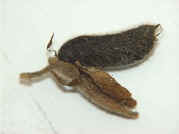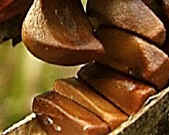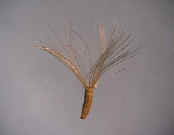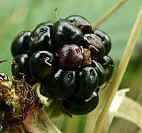
www.offwell.info
Teacher’s Notes
 |
 |
 |
 |
The use of information in this format provides a useful way to combine Science and IT into one learning experience. Seed dispersal is a very easy topic to study. All it requires is close observation of the Natural World which is all around us. A short walk around most school grounds or local green space, in the early Autumn, will usually yield a multitude of different seeds and dispersal mechanisms to show pupils. There is no need to be able to identify specific species.
This topic also readily lends itself to simple experimentation. The importance of features such as parachutes on seeds for wind dispersal can be easily demonstrated. Collect seeds such as Thistle or any Dandelion clock-type seeds. Cut all the parachute hairs off some of the seeds. Leave some seeds with an intact parachute. Stand outside on a windy day. Let the seeds go from the same starting point at the same time and measure the distance which they travel in a set time. This will graphically illustrate the importance of the parachute hairs for keeping the seed airborne. In practice the parachute seeds will not only travel further but they will be able to stay in the air longer. Therefore both distance and time in the air could be measured. From this advanced groups could even calculate the speed.
A similar technique could also be used to compare the dispersal effectiveness of different types of wind dispersed seeds. Again, these should be released from the same starting point, at the same time. One person per seed should monitor the progress of each seed and after a set time (a minute, or longer, depending on wind strength) the end point should be marked. The distance from start to finish can then be measured. The effect of different sizes of seed and different types of mechanism for increasing surface area could be contrasted using this method e.g. parachute vs. winged. Ask the pupils to decide why very large wind dispersed seeds do not use parachutes. The correct answer is of course given within this on-line activity.
Don’t forget to point out to the pupils how the Natural World can be a useful source of inspiration for design ideas. The idea for Velcro came from someone who looked at seeds adapted for animal dispersal. Their hooks sticking into animal fur became the basis for an invaluable attachment aid we are all familiar with. You could even set the pupils the task of designing something useful from their observations of seeds.
The activity also contains specific pages on related subjects such as pollination and competition.